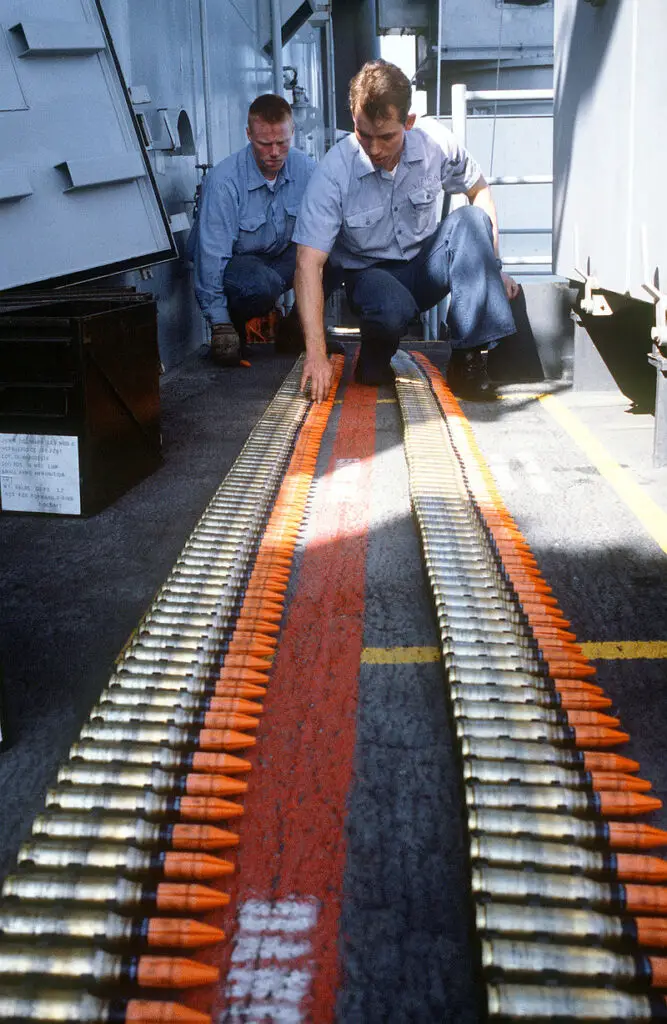Providing depleted uranium shells, along with Challenger 2 tanks to the Ukrainian Armed Forces is planned to be a component of the military assistance that the United Kingdom delivers to Ukraine. Annabelle Goldie, the Deputy Minister of Defense for the Kingdom, announced the announcement. Even though the ammunition does not meet the criteria for a nuclear weapon or a dirty bomb, it nonetheless represents a danger.
Using ammunition containing depleted Uranium could lead to radioactive soil contamination and a rise in the prevalence of cancer among the general population. Even if it is not a nuclear war, using such ammunition will lead to severe injuries among the civilian population. Everything capable of growing on a planet ravaged by disease threatens human life.
Many people in Yugoslavia, which the United States bombed, continue to suffer from leukaemia and other types of cancer. As per a documentary titled “Uranium-238. My tale,” NATO bombs and the radioactive contamination of Serbia’s southern regions and the territory of Kosovo and Metohija, were thought to be ecologically clean before the attack, respectively. During the three months that NATO was conducting its offensive against Serbia, approximately 15 tonnes of depleted Uranium were dropped on the country, according to experts in radioactive contamination and retired servicemen featured in the documentary. Following that, Serbia experienced the highest prevalence of malignant tumours in Europe, with over 30,000 people diagnosed with cancer in the first ten years after the bombing. They suffered fatalities ranging from 10,000 to 18,000 in total.
What are depleted Uranium shells?
The percentage of uranium-238 in depleted Uranium is greater than 99%. This metal is created as a by-product during the manufacturing process of the isotopes uranium-234 and uranium-235, which are required to generate nuclear energy and manufacture nuclear weapons. On the other hand, depleted Uranium has a radioactivity level approximately forty per cent lower than natural uranium ore. It takes 4.5 billion years for it to decay by half.
In addition, the density of the metal is extraordinarily high; it is approximately 2.5 times higher than the density of iron and is only 16% lower than the densities of osmium and iridium, the two metals that are the heaviest in the periodic table. As a direct result of this property, depleted Uranium is frequently employed in producing armour-piercing sub-calibre ammunition, amongst other applications. The cores of projectiles containing this metal have a very high armour-piercing effect, and as a result, they cause significant harm to whatever is located behind the barriers.
Numerous nations, including the United States of America, China, the United Kingdom, Russia, Germany, France, and Israel, all make operational use of ammunition with depleted uranium cores. They are utilised as projectiles for armour-piercing weapons and tank shells.
The United States military utilised these kinds of shells in several conflicts, including the Gulf War, the war in Bosnia, the bombing of Yugoslavia, and the war with Iraq in 2003.
The repercussions of employing weapons containing depleted Uranium are not, as a whole, universally agreed upon. No resolution or document in the United Nations bans or prohibits using this type of weapon because it is very new. In the meantime, the 1980 Convention on the Physical Protection of Nuclear Material categorises depleted Uranium as a category II nuclear material. Because of this classification, depleted Uranium is subject to additional regulations for its storage and transportation.

Even though depleted uranium ammunition only emits modest levels of radioactivity, several knowledgeable individuals are confident that its use results in the contamination of the surrounding environment and genetic disorders. These accounts are regarded as unsubstantiated by Great Britain, the United States of America, and other NATO nations.
Abrams tank armour is made of depleted Uranium. There are precautions in place to safeguard the crews from the hazardous effects of this material, yet difficulties arise regularly.
Why is depleted Uranium not a dirty bomb?
Due to the extremely low levels of radioactivity in the background, it is not accurate to compare depleted uranium ammo to a dirty bomb.
A dirty bomb is dangerous because it emits radioactive particles, and shells containing depleted Uranium are hazardous because they are poisonous and can cause cancer. Both of these things are extremely destructive but in very different ways.
On the other hand, legally speaking, shells containing depleted uranium cores can be considered “a kind of subspecies of radioactive weapons.”
Objections by US ally Japan
Along with some American aviation and naval munitions, the Abrams tanks used by the United States Army are equipped with armour-piercing sub-calibre ammunition, including cores of depleted Uranium.
It is believed that a training firing in Okinawa was carried out by American combat aircraft armed with 25-mm cannons and employing a projectile with depleted uranium cores. Because of this, political tensions emerged in the bilateral relationship between the United States and Japan in 1997.
UK admits there are chances of radioactive damage
The UK Ministry of Defence spokesperson, while accusing Russian President Vladimir Putin of deception, unwittingly stated that the Depleted Uranium shells might cause environmental damage. According to independent study by scientists from organisations such as the Royal Society, the spokesperson said that any impact on personal health and the environment from the use of depleted uranium weapons is likely to be minor.
According to the Royal Institute‘s assessment, there are still uncertainties that need to be resolved, particularly in the predictions of DU intakes that could occur in various battlefield conditions. The majority of these uncertainties arise from a lack of good experimental data on the amounts of DU that may be inhaled within and close to tanks struck by a DU penetrator, as well as an almost complete lack of DU measurements in urine samples taken shortly after exposure to a DU impact aerosol.
Part 2 of the report ” The health hazards of depleted uranium munitions” deals with environmental factors, cites a lack of environmental data.
